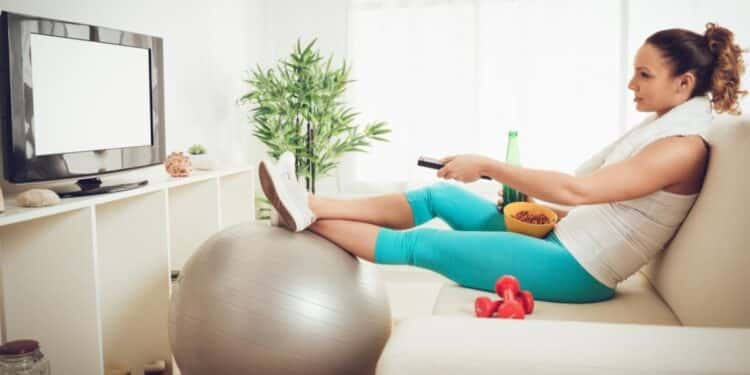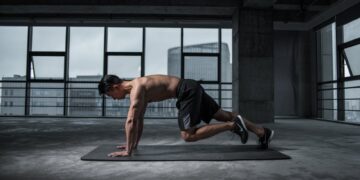Health and fitness are important to maintaining a happy life. We talk with our doctors about it, we scour articles in the paper or online for tips on setting up a plan, and we go to seminars to listen back to our peers share their stories. And yet surprisingly enough, there is an easier way to get started: just do it. And with those few words of wisdom (and hours of research) in this article you’ll learn exactly how.
What the best exercise for beginners?
If you’re just starting out on your fitness journey, it’s important to find an exercise that you enjoy and can stick with. There are a lot of different exercises that you can try, but some may be better suited for beginners than others. Here are a few of the best exercises for beginners:
1. Walking: Walking is a great way to get started on your fitness journey. It’s low-impact and easy on your joints, making it a good choice for those just starting out. Plus, it’s something you can do almost anywhere, at any time.
2. Swimming: Swimming is another great option for beginners. It’s a low-impact exercise that is easy on your joints and muscles. It’s also a great workout for your heart and lungs.
3. Yoga: Yoga is a great way to Stretch, Strengthen and tone your muscles. It’s also a great way to reduce stress and improve flexibility. There are many different types of yoga, so you can find one that suits your needs and abilities.
4. Pilates: Pilates is a great exercise for strengthening your core muscles (abs, back and hips). It’s also good for improving posture and
How often should you exercise?
There isn’t really a definitive answer to this question. It depends on your fitness goals and how much time you have to dedicate to working out. However, most experts generally recommend that healthy adults should get at least 150 minutes of moderate-intensity aerobic activity or 75 minutes of vigorous-intensity aerobic activity each week. If you’re just starting out, it’s best to ease into things gradually. Start with three 30-minute workouts per week and then increase the frequency and duration as you become more comfortable.
Where is it best to work out?
There are a lot of different places that you can work out, but some are better than others depending on what your goal is. If you want to lose weight, working out at home is usually best because you can control what you eat and how much you exercise. If you want to bulk up, then going to the gym is probably a better option because they have more equipment and space. No matter where you choose to work out, make sure that it is somewhere that you feel comfortable and will be able to stick with it.
What types of fitness equipment are best for beginners?
There are a few key pieces of fitness equipment that are great for beginners. A stability ball is a great tool for a beginner because it can be used for a variety of exercises and it’s very versatile. A yoga mat is also a good piece of equipment to have because it can be used for many different types of workouts. A set of dumbbells is also a good investment because they can be used for a variety of exercises and they’re relatively inexpensive.
Does being a beginner mean you can’t or shouldn’t buy expensive fitness equipment?
No way! Just because you’re starting out on your fitness journey doesn’t mean you can’t or shouldn’t buy quality equipment. In fact, investing in some key pieces of gear can actually save you money in the long run. For example, a good pair of running shoes will last longer and provide better support than a cheaper pair. The same goes for workout clothes and other gear. That said, you don’t need to break the bank to get started. There are plenty of ways to get fit on a budget. Check out some of our favorite tips below.
Why do people avoid getting fit? Is it worth the push?
There are many reasons why people avoid getting fit. Some may think it’s too difficult or time-consuming, while others simply don’t see the point. However, there are plenty of benefits to getting fit, and it doesn’t have to be as hard as you might think. Here are some of the easiest and cheapest ways to get started:
1. Take a walk. Walking is one of the simplest forms of exercise, and it’s free! If you can, try to walk for at least 30 minutes a day. You can do this all at once or break it up into smaller chunks throughout the day.
2. Get active at home. There are tons of great workout videos online that you can do in the comfort of your own home. No need for a gym membership!
3. Make use of your lunch break. If you have a job that keeps you sedentary for most of the day, make sure to get up and move during your lunch break. Even just a quick walk around the block will help get your blood flowing and improve your energy level for the rest of the afternoon.
4. Join a sports team. If you’re competitive, joining a recreational sports team can be a
Conclusion
Now that you know the basics of getting fit on a budget, it’s time to put your knowledge into action. Remember, fitness is a journey, not a destination. Start slow and gradually work your way up to more challenging workouts. And don’t forget to have fun! Finding an activity that you enjoy is essential to maintaining your motivation in the long-term. With these tips, you’ll be well on your way to achieving your fitness goals without breaking the bank.











